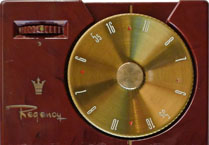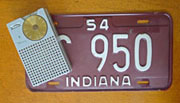 The Regency TR-1 story, based on an interview with Regency
co-founder, John
Pies (partner with Joe
Weaver)
The Regency TR-1 story, based on an interview with Regency
co-founder, John
Pies (partner with Joe
Weaver)
THE DASH TO
BE FIRST
Raytheon, Regency-TI and
the unknown Tokyo Tsushin Kogyo company from Japan fiercely sprinted
to have the first transistor radio on the consumer market. The
Regency-TI team reached the mark in October 1954 with its pocket radio, while Raytheon
crossed the finish line the following year with a picnic portable version, and Tokyo Tsushin Kogyo
finished shortly thereafter, also with a picnic portable radio. Getting a transistor radio on the mass
market for the third company was an important milestone to help
Japan's suffering post WWII economy and self-image. This company
finally changed its name so Americans could pronounce it...the
new name became Sony.
 TEXAS INSTRUMENTS
TEXAS INSTRUMENTS
ALL DRESSED
UP AND NO WHERE TO GO
That's how Texas
Instruments felt in early 1954 with a germanium junction transistor
in hand, and no major radio builders willing to put it in their
products. Even though Raytheon had succeeded with the first mass
produced transistor the previous year, RCA, Sylvania and Philco were
not ready to adopt the novel transistor. But this changed in June
when TI inked a joint venture with Regency to get a radio into high
volume production for the Christmas market.
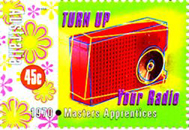 THE BOMB, HOLLYWOOD, ROCK 'N ROLL, SPACE ALIENS, and
more TR-1 TRIvia [view Regency trivia]
THE BOMB, HOLLYWOOD, ROCK 'N ROLL, SPACE ALIENS, and
more TR-1 TRIvia [view Regency trivia]
WHAT PUT THE TR-1 IN FRONT
Prototype transistor radios
built prior to the TR-1 required manually selecting and matching
electrical components to make them work, which in turn drove
prohibitive cost per unit for large scale production. Regency's
master engineer, Dick Koch, opened the door to the TR-1's success by
designing a feedback circuit that accommodated the tolerance of
production run components and let them be soldered directly into the
boards without manual selection. This proved to be the right answer,
and 140,000 TR-1's poured off the production line.
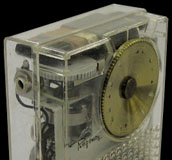 REGENCY SHOWCASE
REGENCY SHOWCASE 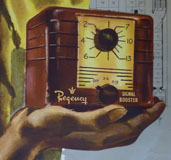
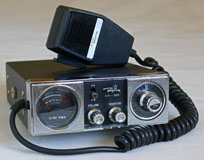
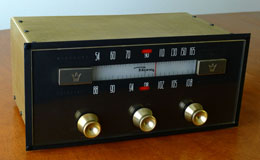
Featuring TR-1 and various early Regency products & historical images [view Regency showcase]
The
Vision
BACK THEN, LOOKING
FORWARD
"Regency was a thorn in the
side of the industry which in-turn stimulated the practical
application of the transistor" quote from Regency/TI patent attorney
Frank Mascarich
IBM CEO, Thomas J. Watson,
Jr, saw transistors as the future of computers, and ordered that IBM
build no more machines with tubes after June 1, 1958. But his
designers had been reluctant to embrace the new technology. Watson
bought and handed out numerous Regency TR-1's to set an example for
IBM employees. Whenever engineers complained to Watson about the
decision, he just gave them a TR-1.
"Texas Instruments vice
president, Pat Haggerty, had the revolutionary notion that he could
put the transistor into every home - by building the transistor
radio...Ten years later, Haggerty decided he could put the
microchip into every household as well" quote from THE
CHIP
TODAY, LOOKING
BACK
Steve Wozniak quote: "My first transistor radio...I loved what it could do, it brought me music, it opened my world up"
Bill Gates quote: "Without
the invention of the transistor, I'm quite sure that the PC would not
exist as we know it today"
PHYSICS TODAY book review of
CRYSTAL FIRE, the history of the transistor: "....the story not only
of one of the greatest inventions of the 20th century but of the
birth of the information age."
FORTUNE magazine quote: "For
perspective, remember that the transistor, arguably the most
important invention of the 20th century, came out of Bell Labs in the
late 1940s as a clunky device of wire, gold foil, glue, and other
components. The first transistorized consumer product, the Regency
TR-1 radio, went on sale Oct. 18, 1954, and sold out almost
immediately. If you owned one, you were the coolest thing on two
legs."
Books, TV Programs,
Reference
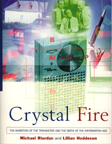 ............
............ ..........
..........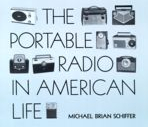 .........
.........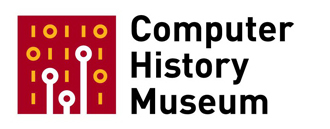
CRYSTAL
FIRE by Michael Riordan and Lillian
Hoddeson document the invention of the transistor and the industry it
created. "[Riordan and Hoddeson] deploy their skills to untangle this
fascinating history. Their very readable account describes the
technical issues surrounding the transistor's creation and the
colorful characters involved." - San Francisco Chronicle
THE
CHIP by T. R. Reid brings the
transistor to the next level, the microchip. How many transistors did it use:
1954 TR-1 had 4 transistors; 1971 microprocessor had 2,300
transistors; the 1978 Intel 8086 microprocessor had 29,000
transistors; the 2003 Intel Pentium 4 microprocessor had 55 million
transistors; the 2015 Intel Broadwell microprocessor had 1.9 billion
transistors; the 2020 Cerebras chip had 2.6 trillion transistors.
The
PORTABLE RADIO in AMERICAN LIFE by
Michael Brian Schiffer documents the history of portable radios and
the radio's impact on the pop culture.

 In 2002, "Boy's Toys" week on the History Channel featured a six
minute spot about the invention of the transistor and showed some of
the first transistor radios. This program, named MORE GADGETS, is part of the
Modern Marvels series. The TR-1, ".....a stunningly small radio that
would kick off the revolution of high tech miniaturization", the
Raytheon 8TP-4 (second commercially available transistor radio), and
other stylish radio designs of the time are highlighted.
In 2002, "Boy's Toys" week on the History Channel featured a six
minute spot about the invention of the transistor and showed some of
the first transistor radios. This program, named MORE GADGETS, is part of the
Modern Marvels series. The TR-1, ".....a stunningly small radio that
would kick off the revolution of high tech miniaturization", the
Raytheon 8TP-4 (second commercially available transistor radio), and
other stylish radio designs of the time are highlighted.


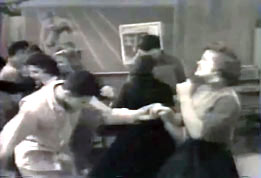 "TRANSISTORIZED" sponsored by PBS.
Intriguing one-hour TV special hosted by Science Friday's Ira Flatow - a
must see show. The program was heavily endowed by several foundations
as an educational and entertaining experience.
"TRANSISTORIZED" sponsored by PBS.
Intriguing one-hour TV special hosted by Science Friday's Ira Flatow - a
must see show. The program was heavily endowed by several foundations
as an educational and entertaining experience.
View an excerpt from this PBS special covering the transistor radio's impact on rock & roll and introduction to the information age; and how the Regency TR-1 beat Sony to be the first on the market.
Click to view the entire program on YouTube. The full-length program was broken into six short video segments: view each segment at 1of6, 2of6, 3of6, 4of6, 5of6, 6of6
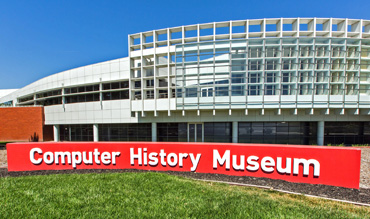
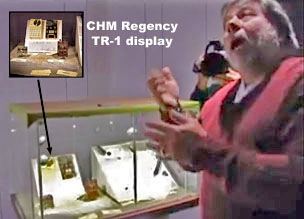
Computer History Museum, Mountain View, California - The museum's collection holds more than 100,000 items in 25,000 square feet, including an ivory Regency TR-1 displayed in the museum's "Inventing the Transistor" display area. Leading up to the exhibit's opening in January 2011, Apple co-founder Steve Wozniak appeared at the CHM to talk about some of the products and people that inspired him to create the first Apple computer. Included in Wozniak's EIGHT KEY MACHINES "that have led to the Facebooks, smartphones, and PlayStations of today", was the Regency TR-1. Ref. CNET article by Scott Ard
As quoted from WIRED'S online article by Jonathan Snyder and Brian X. Chen in reference to the CHM Regency TR-1, "…Repeating a phrase that he used several times during the tour, Steve Wozniak said without this technology, portable media players would never have come into existence — and without that, we wouldn't have iPhones today"
Sixty years after the Regency TR-1 hit the consumer Christmas market in 1954, Google Inc. held an employee holiday party at the Computer History Museum, and attending was software engineer, Matt Pies, grandson of Regency co-founder John Pies. [click to view TR-1 display & Matt at the CHM]
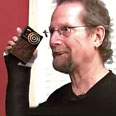
 In 2011, the History Channel aired 101 GADGETS THAT CHANGED THE WORLD; and the transistor radio fell within the golden top 20 gadgets. In this program, Rock 'n Roll Hall of Fame artist Roger McGuinn of The Byrds describes how the transistor radio inspired him into Rock music. CLICK to view more information about McGinn's Regency TR-1G and his introduction into this new form of music.
In 2011, the History Channel aired 101 GADGETS THAT CHANGED THE WORLD; and the transistor radio fell within the golden top 20 gadgets. In this program, Rock 'n Roll Hall of Fame artist Roger McGuinn of The Byrds describes how the transistor radio inspired him into Rock music. CLICK to view more information about McGinn's Regency TR-1G and his introduction into this new form of music.

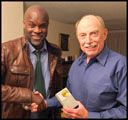 In 2012, The PBS History Detectives searched for the oldest Regency TR-1 that still existed at that time. Hosted by Tukufu Zuberi, TR-1 experts were called-in, including Steve Reyer as a consultant, and those who appearded on the show - Eric Wrobbel, Don Pies (son of Regency co-founder John Pies) and Clay Tudor (son of Regency President Ed Tudor). View the short episode preview, or watch the Full Episode. Ref: History Detectives Transistor Radio, Season 10 Regency TR-1 starts at 28:45
In 2012, The PBS History Detectives searched for the oldest Regency TR-1 that still existed at that time. Hosted by Tukufu Zuberi, TR-1 experts were called-in, including Steve Reyer as a consultant, and those who appearded on the show - Eric Wrobbel, Don Pies (son of Regency co-founder John Pies) and Clay Tudor (son of Regency President Ed Tudor). View the short episode preview, or watch the Full Episode. Ref: History Detectives Transistor Radio, Season 10 Regency TR-1 starts at 28:45
 Eric
Wrobbel's "The Regency TR-1 Family"
booklet describes the subtle variations in the TR-1 that depended on
production date, contrasts differences between radio models within
the Regency TR family, and illustrates many other pictures. Visit Eric's extensive website at http://www.ericwrobbel.com
Eric
Wrobbel's "The Regency TR-1 Family"
booklet describes the subtle variations in the TR-1 that depended on
production date, contrasts differences between radio models within
the Regency TR family, and illustrates many other pictures. Visit Eric's extensive website at http://www.ericwrobbel.com
 TR-1 Technical
Data and Service Notes Manual. 5.7 Mb PDF
document scanned from an original copy of this 1955 tech publication.
TR-1 Technical
Data and Service Notes Manual. 5.7 Mb PDF
document scanned from an original copy of this 1955 tech publication.
 "Regency TR-1 Transistor
Radio Facts and Figures" by Steve Reyer. In-depth TR-1 resource,
including TR-1 background, pictures of numerous colors, history,
repair info, TR-1 construction details, and more. CLICK to view Steve's entire line of TR-1 colors. https://www.collectornet.net/regency/
"Regency TR-1 Transistor
Radio Facts and Figures" by Steve Reyer. In-depth TR-1 resource,
including TR-1 background, pictures of numerous colors, history,
repair info, TR-1 construction details, and more. CLICK to view Steve's entire line of TR-1 colors. https://www.collectornet.net/regency/
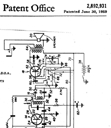 Regency TR-1 patent
# 2,892,931 documents Dick Koch's
historic circuit design. 2.1 Mb PDF document. CLICK to view additional Regency patent information.
Regency TR-1 patent
# 2,892,931 documents Dick Koch's
historic circuit design. 2.1 Mb PDF document. CLICK to view additional Regency patent information.
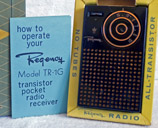 Regency Owner's Manual. 1.1 Mb PDF
document scanned from an original copy. This manual is the same for the TR-1 & TR-1G, with the exception that for the earliest TR-1s, there was no coin slot. WARNING: DO NOT use a coin to help open today's vintage Regency radios - instead, visit Steve Reyer's how-to take off the back. Also, visit Steve's comprehensive repair section titled "Repairing a Regency TR-1 -- my experiences". On page 3 of the owner's manual, instructions are given regarding what to do "In the event of an enemy attack...". Visit Duck and Cover for additional instructions.
Regency Owner's Manual. 1.1 Mb PDF
document scanned from an original copy. This manual is the same for the TR-1 & TR-1G, with the exception that for the earliest TR-1s, there was no coin slot. WARNING: DO NOT use a coin to help open today's vintage Regency radios - instead, visit Steve Reyer's how-to take off the back. Also, visit Steve's comprehensive repair section titled "Repairing a Regency TR-1 -- my experiences". On page 3 of the owner's manual, instructions are given regarding what to do "In the event of an enemy attack...". Visit Duck and Cover for additional instructions.
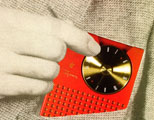 The 2004 fall
issue of AMERICAN
HERITAGE's INVENTION & TECHNOLOGY (vol.
20, #2) celebrated the 50th Anniversary of
the Regency TR-1 in an article titled "The
Revolution in Your Pocket". Veteran
semiconductor device designer Robert J. Simcoe documents the
challenges that had to be overcome to bring the "laboratory"
transistor, the not yet invented transistor radio circuitry, and the
manufacturing of miniature discrete components into reality. An
excellent article that captures the historic significance of the TR-1
and how industry met the challenge.
The 2004 fall
issue of AMERICAN
HERITAGE's INVENTION & TECHNOLOGY (vol.
20, #2) celebrated the 50th Anniversary of
the Regency TR-1 in an article titled "The
Revolution in Your Pocket". Veteran
semiconductor device designer Robert J. Simcoe documents the
challenges that had to be overcome to bring the "laboratory"
transistor, the not yet invented transistor radio circuitry, and the
manufacturing of miniature discrete components into reality. An
excellent article that captures the historic significance of the TR-1
and how industry met the challenge.  hear Robert Simcoe 2004 NPR interview
hear Robert Simcoe 2004 NPR interview
 Article titled "The Pod Father" in INDIANAPOLIS MONTHLY magazine, March 2007 issue. Author Megan Fernandez gives us a fun read celebrating the Regency TR-1's place in cultural and electronics history.
Article titled "The Pod Father" in INDIANAPOLIS MONTHLY magazine, March 2007 issue. Author Megan Fernandez gives us a fun read celebrating the Regency TR-1's place in cultural and electronics history.
EE
TIMES magazine, October 30, 1997 issue
published a comprehensive series of articles that documented the
50-year evolution of the transistor and its
impact on the electronics industry. The first transistor radio was
discussed in the article titled "A Radio and Silicon" by George
Rostky.
 The Smithsonian Institution online magazine payed tribute to the portable electronics age in an article by Joseph Stromberg in 2011, and celebrated the Regency TR-1 60th anniversary in an article by Cari Romm in 2014.
The Smithsonian Institution online magazine payed tribute to the portable electronics age in an article by Joseph Stromberg in 2011, and celebrated the Regency TR-1 60th anniversary in an article by Cari Romm in 2014.
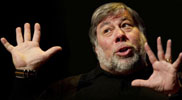 Steve Wozniak discusses his affinity for transistor radios and his lifetime love for gadgets in a worth reading interview by Billy Steel. Quote Wozniak "My first transistor radio was the heart of my gadget love today". This compassion is further elaborated upon in Forbes article by Jon Bruner titled "Steve Wozniak's Favorite Gadget" .
Steve Wozniak discusses his affinity for transistor radios and his lifetime love for gadgets in a worth reading interview by Billy Steel. Quote Wozniak "My first transistor radio was the heart of my gadget love today". This compassion is further elaborated upon in Forbes article by Jon Bruner titled "Steve Wozniak's Favorite Gadget" .
 xxxx
xxxx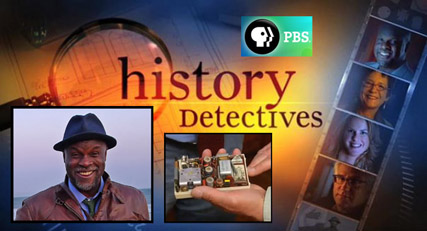

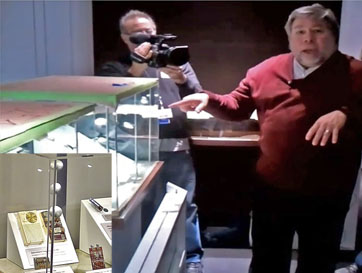
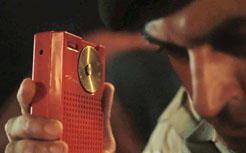



 Has the earliest Regency TR-1 still in existence been found? An early TR-1 has surfaced and the PBS History Detectives try to answer this question; and in doing so, tell the intriguing story behind this historic radio.
Has the earliest Regency TR-1 still in existence been found? An early TR-1 has surfaced and the PBS History Detectives try to answer this question; and in doing so, tell the intriguing story behind this historic radio. 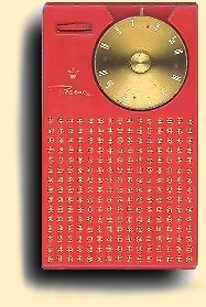
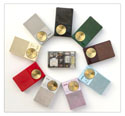







 ............
............ ..........
.......... .........
.........

 In 2002, "Boy's Toys" week on the History Channel featured a six
minute spot about the invention of the transistor and showed some of
the
In 2002, "Boy's Toys" week on the History Channel featured a six
minute spot about the invention of the transistor and showed some of
the 











 Regency Owner's Manual
Regency Owner's Manual

